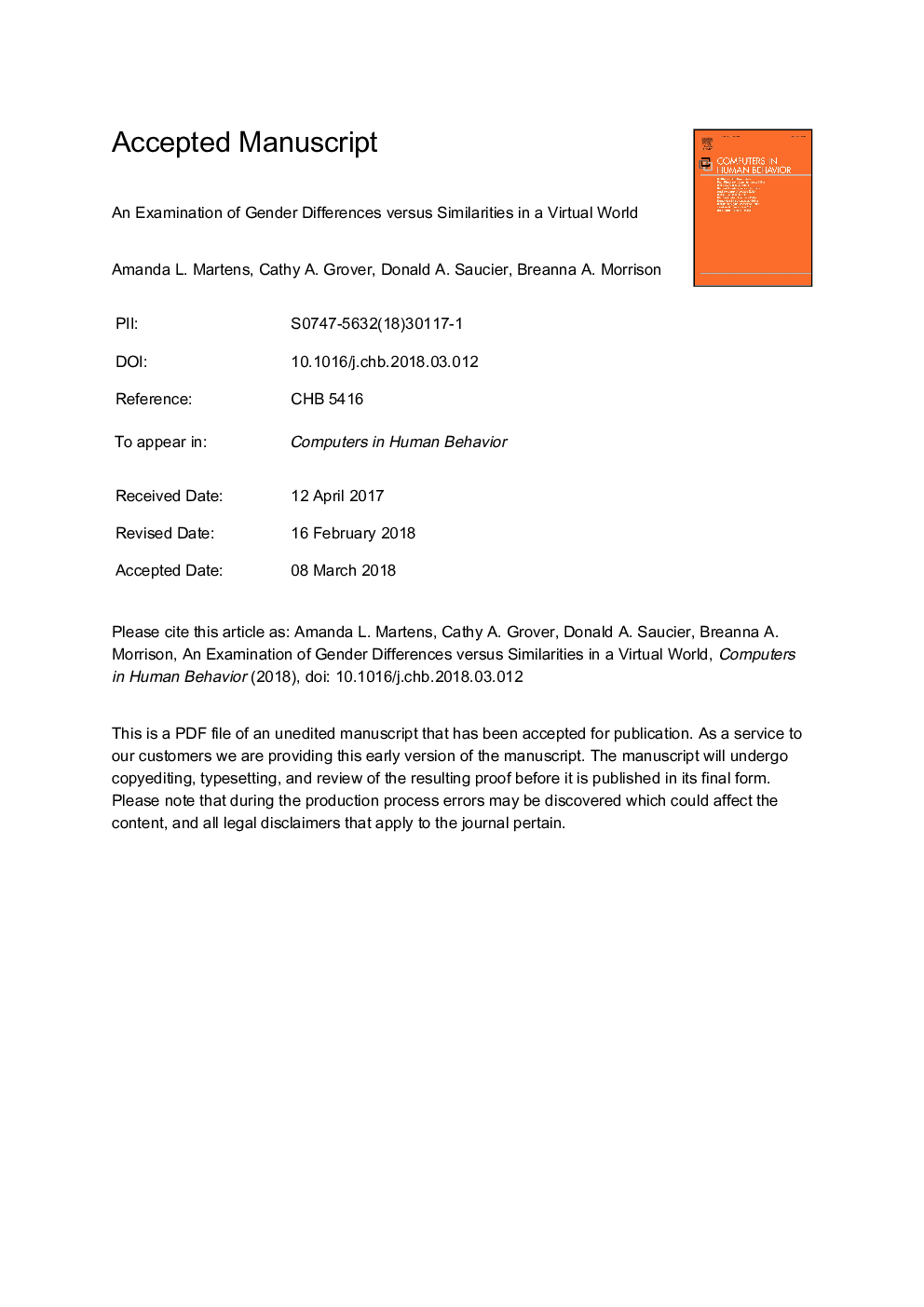| Article ID | Journal | Published Year | Pages | File Type |
|---|---|---|---|---|
| 6836085 | Computers in Human Behavior | 2018 | 26 Pages |
Abstract
We derived competing hypotheses from the gender similarities perspective versus the gender differences perspective to examine participants' behavior in an online virtual world in which we manipulated participants' gender. To manipulate participants' gender in the virtual environment, we randomly assigned them to one of three avatars (female, male, or robot). Using a screen recording device, we measured the percentage of time participants spent interacting with empathizing (e.g., options for shopping, telephone) and systemizing (e.g., weapons, options for building) objects in a virtual reality house that we constructed to reflect evidence put forth by the differences perspective. Because we derived competing hypotheses we expected to find support for either the similarities perspective or the differences perspective; however, our results suggested support for both. Consistent with the differences perspective hypotheses, participants paid attention to objects in the environment that were consistent with the social representation of their own gender. However, our results were consistent with the similarities perspective hypotheses, such that the avatars' gender also played a role in the percentage of time participants spent interacting with empathizing and systemizing objects. Therefore, we conclude that observable differences between men and women are the consequence of both biological and social forces, and research should focus on the interaction between the two as etiologies and explanations for sex and gender differences and similarities.
Keywords
Related Topics
Physical Sciences and Engineering
Computer Science
Computer Science Applications
Authors
Amanda L. Martens, Cathy A. Grover, Donald A. Saucier, Breanna A. Morrison,
